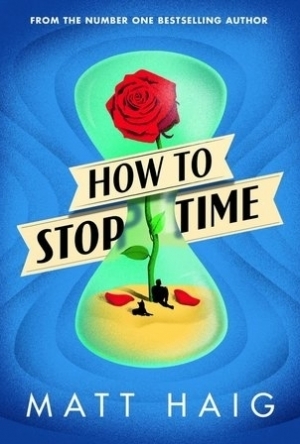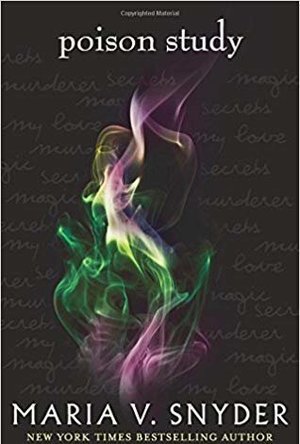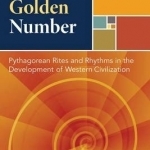
The Golden Number: Pythagorean Rites and Rhythms in the Development of Western Civilization
Paul Valery and Matila C. Ghyka
Book
The Golden Number, or Phi (PHI), is a geometric ratio found throughout nature, often underlying the...

Space Oddities: Absurd Attempts to Explain the Universe
Book
On 4 October 1957, the Soviet Union's famous satellite Sputnik was launched into orbit, and the...
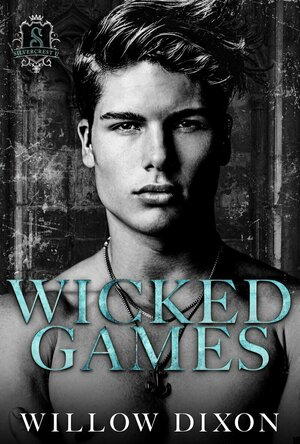
Wicked Games (Silvercrest U, #1)
Book
Killian I hate obscure school rules. Especially the one that says siblings have to room together...
Contemporary Stepbrothers MM Dark Romance

Charles-Etienne Brasseur de Bourbourg, Premier Grand Mayaniste de France: 2015
Book
Two hundred years ago, on September 8, 1814, in the northern French city of Bourbourg, a boy was...

Leap of Fate
Games
App
*** Minimum hardware: iPad 4, iPad mini 2, iPhone 5s. *** Leap of Fate is a furiously-paced...
Hazel (1853 KP) rated See How They Run (Embassy Row, #2) in Books
Dec 14, 2018
See How They Run</i> begins one week after the first novel in Ally Carter’s <i>Embassy Row</i> series comes to its dramatic conclusion. It is a week since sixteen-year-old Grace remembers what happened to her mother; a week since her life was in danger; a week since the Prime Minister suffered a fatal “heart attack”.
Naturally, it is not possible for Grace’s life to go back to “normal” after the bombshells dropped in <i>All Fall Down</i>, but even if she were to try her life would only be turned upside again. After a brief love triangle sparks a fist fight, Grace’s friend Alexei is suspected of murder when the body of Jamie’s, Grace’s brother’s, friend is washed up on the beach. Since being introduced to a world of secret societies and passages 100 feet under the city, Grace is certain that Alexei has been framed, but how can she prove it? As Grace and her friends set out to discover the truth, she unearths a lot more than she bargained for.
<i>See How They Run</i> is even more exciting than its precursor. There is no need for introductions to the characters, nor their history, allowing the story to jump straight into the action. The plot twists and turns from beginning to end as the mystery becomes more complicated before ending on yet another bombshell.
Ally Carter is inventive and accurately captures the personality of a person suffering from PTSD. Due to past psychotic episodes, Grace is rarely believed whenever she suggests something that goes against the beliefs of the masses. She also questions herself and her ability to post judgment on the situation.
Grace is not a typical young adult hero and thus will appeal to many readers who feel different from other people in a negative way. Although the brief love triangle toward the beginning of the book, romance does not get in the way of or detract from the plot, which a lot of avid readers will be pleased about.
Ally Carter is already popular within the young adult world and this series will not be a disappointment to her fans. Unsurprisingly the books need to be read in order; so if you like the sound of this book, make sure you get a copy of the first in the series!
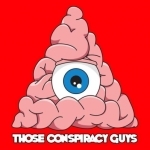
Those Conspiracy Guys
Podcast
Those Conspiracy Guys is a weekly podcast where we discuss all types and genres of conspiracy...
Hazel (1853 KP) rated How to Stop Time in Books
Jun 30, 2017
All the world’s a stage/And all the men and women merely players/They have their exits and their entrances/And one man in his time plays many parts …
How to Stop Time is British author Matt Haig’s latest novel, and a very interesting one it is, too. In the present day, Tom Hazard is a 40-something-looking man who has landed himself with the position of history teacher at a comprehensive school in Tower Hamlets. Despite not having any formal training, Tom is the perfect candidate for the position because, despite his looks, he is 439 years old. But, that is a secret that no one must ever discover.
The book jumps back and forth between the current time period and flashbacks to various events during Tom’s extensive past. Born in 1581, Tom has experienced a great part of British history and major events around the world. Constantly changing his name and identification, he moved around the world, switching locations whenever people began to get suspicious of his never-aging body.
After a couple of centuries, Tom met a man with the same condition as himself, who revealed that there were many people in the same predicament. Promising to be able to help keep him safe, the stranger coerces Tom into a union called the Albatross Society. There are many rules and conditions to follow, however, the most important advice is to never fall in love. Unfortunately, Tom has already done this.
In London 1623, Tom met the love of his life, Rose, who he eventually married and with whom he had a daughter. Although Tom does age, it is at the rate of one year every 15; therefore he eventually had to leave his family in order to keep them safe. However, his daughter Marion has inherited his condition and Tom spends his subsequent years trying to find her. With promises to help him on his quest, Tom reluctantly joins the Albatross Society, despite their questionable ways.
All Tom wants is to be able to lead a normal life, yet the narrative reveals how impossible this has been, both in the past and now in the present. From Elizabethan England to Elizabeth II’s reign, Tom lives through several monarchs, wars, colloquial changes, industrialisation, sanitisation of comestibles, and the introduction of digital technology. Without the added pressure of keeping his true identity disguised, it is very interesting to experience historical events through the eyes of the protagonist.
The ending, unfortunately, does not quite satisfy the growing excitement and interest of the rest of the novel. Important things happen too quickly, making it confusing to understand the main storyline. The majority of the story appears to only be setting the scene for the final couple of chapters, but as this is so fascinating, there cannot be too much complaint.
Presuming that Haig has done his research and that the historical periods are factually correct, How to Stop Time is as educational as it is entertaining. History lovers will enjoy reading about famous people such as Shakespeare and Charlie Chaplin, as well as getting an insight into the daily lives of past societies. Most importantly, Tom is a captivating character, who, despite having lived for four centuries, is still as socially awkward as the best of us.
How to Stop Time contains a fantastic concept about the progression of time and aging, but its most poignant point is the emphasis on finding and being you. Change is an inevitable certainty, as witnessed by Tom whose current world looks nothing like his memories. Although people must adapt to the on-going changes, living how you want is more important than adjusting to fit in with everyone else. In essence, do not be afraid to let the world see your true self.
Gareth von Kallenbach (980 KP) rated Hellboy (2019) in Movies
Jul 2, 2019
Hellboy (David Harbour) is a demon from Hell (hence the name), his backstory as we learn early on in the movie is pretty standard fare. The Nazi’s are on the verge of losing World War II and in a desperate move to turn the tide call upon the evil sorcerer Rasputin to call upon the depths of Hell and raise a champion who will fight for them. The incantation is interrupted when famous Nazi hunter Lobster Johnson (Thomas Haden Church) goes in with guns blazing, as other allied troops join the fray. Their relief at stopping the incantation is short-lived as the alter opens and a young demon climbs through. Professor Broom who had infiltrated the Nazi team had been brought in to put down any evil that was successfully summoned. Upon seeing the young demon, Professor Broom (for reasons known only to him at the time) decides not to kill him, but to take him in and raise him as his own.
Flash forward to present day, and Hellboy as we now know him alongside his father are members of the B.P.R.D (Bureau for Paranormal Research and Defense). On a mission to defeat some giants that are roaming the countryside in England they stumble upon an ancient evil that dark forces are trying to retrieve. It seems back in the dark ages a war between humans and monsters was being waged. Seeing no end to the violence King Arthur (Mark Stanley) and his faithful wizard Merlin (Brian Gleeson) offer to surrender to The Blood Queen (Milla Jovovich). On top the hill where the surrender is to take place, the Blood Queen is betrayed by one of her own and King Arthur, using the infamous blade Excalibur, cut the Blood Queen into several parts. While she can’t be killed, she can be contained and each of her body parts are placed in separate boxes. These boxes are then sealed with holy water that only a holy man can unlock and are sent to the farthest corners of England. If the Blood Queen ever returns, she will release a plague that will not only destroy England but spread across the entire world. Thus, sets the stage for Hellboy.
Being a fan of the previous movies and in particular the portrayal of Hellboy by Ron Pearlman, I wasn’t sure how to feel about David Harbour in this role. It’s always a bit hit or miss when a series is rebooted, and I was pleasantly surprised with how David Harbour stepped up and into the role. While he doesn’t have the same menacing size and gruffness that Ron Pearlman possesses, it didn’t take me long to adjust to this new version. He is joined by a strong supporting cast consisting of Sasha Lane as his ghost whispering friend Alice and Ben Daimo as an MI-11 agent weary of teaming up with a monster. Milla Jovovich does an outstanding job as the Blood Queen and her fairy-pig friend portrayed by Stephen Graham and Douglas Tait.
Visually the movie is stunning, with the numerous monsters and fairy creatures coming to life before your eyes. The movie is exceptionally gory as one might expect, with numerous limb dismemberments, decapitations, and more blood than anyone would expect to erupt from such wounds. It’s over-the-top and meant to be that way which tended to bring some uncomfortable laughter at times from those around me. Having recently played Mortal Kombat 11, I couldn’t help but feel that some of the fatality screens in that game would have felt right at home in this movie.
Story is where I feel Hellboy falls a bit flat. There are so many characters and side stories going on that it’s easy to get lost in it. From my description above, you can see that it includes King Arthur, Rasputin, Nazis, Secret Societies, Witches that eat children, monsters…and that’s only in the first half of the movie. There is a ton going on and there are a lot of disconnects. While trying to avoid spoilers, there is a part in the film where Hellboy is talking to Baba Yaga (see another character reference), and after tricking her she places a curse on him. I’m still trying to figure out if the curse she placed on him occurred in the movie or not. In fact, I’m trying to figure out exactly what the point of that scene was. It’s not a bad story, but it tries to pack in a TON of references in its brief hour and forty five-ish minutes.
I’ll be the first to admit that I’ve never read any of the Hellboy graphic novels, I have seen both of the previous films, so I had a little bit of background going into this movie. I don’t know if all the references in the movie are pivotal to the novels or not. You certainly don’t have to have read them or seen the previous movies to appreciate this one, I just wonder if they tried to fit in too many Hellboy references into one film. Hellboy is an enjoyable ride, and it certainly doesn’t drag at all, in fact I was surprised at how quickly it was over. With all that being said, it’s a fun action-packed movie, with lots of gratuitous violence if that’s your thing. I certainly wouldn’t recommend taking your children to see it, violence aside, I just think there is way too much going on and it can be difficult to follow. Oh, and don’t forget to stay through the credits for the end credit scene. It’s not pivotal to the movie, but worth waiting around for.
Mandy and G.D. Burkhead (26 KP) rated Poison Study (Study, #1) in Books
May 20, 2018
The first trilogy, comprised of Poison Study, Fire Study, and Magic Study, follows Yelena Zaltana. The second series, also called the Glass series, follows her friend Opal Cowan in Storm Glass, Sea Glass, and Spy Glass. The final trilogy, Shadow Study, Night Study, and Dawn Study, is where things get a bit odd. Maria V. Snyder had thrown in a few short stories/novellas throughout from different characters’ points of view. Perhaps she got bored of just sticking to one POV, or maybe fans wanted more from the other characters, so the third trilogy is from Yelena’s POV in first person and the POV’s of multiple characters (mainly Valek, Leif, and Janco, with a few others popping in from time to time) in third person.
I’m not sure which editor thought it would be a good idea to have POV switch from first person to third person in the same novel, but—yikes—is it jarring. Even with the wonky POV stuff in the third trilogy, these books are amazing and absolutely worth your time to read. Snyder’s world-building is compelling, detailed, and original. The books take place mostly between two pre-industrial countries: Ixia and Sitia. Ixia is a post-revolution country ruled by Commander Ambrose. His personal body guard and assassin is Valek. In the first novel Yelena is in prison for murder and is offered the choice to be the Commander’s food taster in exchange for her life. She agrees, and throughout the first book she and Valek begin to fall in love.
Ixia reminded me a lot of Communist Russia or China. In its attempts to throw away the corrupt government and society that came before, it has also thrown out all culture in the process. The country has been re-divided into districts with numbers instead of names, everyone is forced to wear a uniform, all art and extravagance has been destroyed, people have to have passes to travel between districts, and magic is forbidden. Anyone born with it is killed (or so the reader is led to believe). But Maria V. Snyder does a wonderful job of showing the good with the bad in this totalitarian dictatorship. Everyone has a job and nobody goes hungry, women are now equal to men, and violence and sexual assault are intolerable. This is why Yelena ends up in prison in the first place: she murdered the man that raped her. Now, this is probably my first major gripe with the series. We learn that Commander Ambrose loathes sexual assault and will execute anyone found guilty of it, but apparently killing a rapist in self-defense is also an executable offense. And all of that being said, Ambrose still has his own personal assassin. It all feels a bit contradictory, but again, that’s what I like about this series: it does an excellent job of peeling back the layers of her fictional societies and pointing out that governments and people in power tend to be hypocritical.
Now, the series name (or rather one of them) is Chronicles of Ixia, but honestly, it should have been called Chronicles of Sitia, because that is where most of the story takes place and is by far the more interesting and vibrant country. Sitia is part jungle, part desert, and full of magic. The peoples are divided into multiple clans or tribes that are all unique and compelling. In the second book, Yelena flees to Sitia after the Commander learns she has magic, and there she finds the family she was kidnapped from as a small child. They are part of the Zaltana clan, a group of people that live high in the trees in the jungle. Whenever I read about them, I would have to remind myself that they were not wood elves or dryads, because while there is magic in these books, there are no fantastical creatures: all characters are human or animal.
Another fascinating tribe is the Sandseeds, a group of nomads in the desert known for two major things: breeding super smart horses and having Storyweavers. The Storyweavers are people who have the magical ability to see the future and guide others, but who have to do it really cryptically because reasons (I appreciate that this gets pointed out by an annoyed Yelena multiple times). And of course, the Sandseed horses are fantastic; they choose their rider and able to mentally communicate with magical people. They even have their own horse names for people that they like.
Besides the different clans throughout Sitia, there is also the capitol, the Citadel, which is home to the magic school and the Sitian Council. While very different from Ixia, Sitia is by no means perfect. Its Council epitomizes everything annoying and dysfunctional about a bureaucracy. While the council members are elected and come from every clan in Sitia, they are at best useless and at worst actively impede the main characters.
The magic school is interesting, though the story doesn’t actually spend much time there. I like how magic was done in this series: it usually runs in families, most people with it have control over one or two things (ie. fire, mind-control, telepathy, etc.), but those who have the ability to master more can become Master Magicians after enduring a daunting trial. Magic is bound in people’s blood, so blood magic is a thing and is obviously bad, and magic (and a person’s soul) can be stolen using an intricate and gruesome blood ritual that involves prolonged torture, rape, and then murder.
The power blanket is another interesting concept used in this series. Essentially is resides over the entire world and is the essence of magic, so magicians can pull from it to augment their own magic. However, if they pull too much and lose control, they can flame out, killing themselves and temporarily damaging the blanket in the process. I thought this was a good literary tool to prevent magical characters from being too OP (at least most of the time).
I especially like the romantic relationships in this series. Valek and Yelena are of course the main couple. In the first book they fall in love, in the second book they get separated, and throughout the series they regularly cross paths and save one another. Yelena and Valek are heartmates, and as the series progresses they both have to mature and learn how to trust one another. My biggest complaint about the romance is that all sex scenes are just fade to black, which I personally find a bit boring.
The other major romantic relationship is between Opal and Devlen. This one was a bit awkward. Opal actually goes through a couple of guys first: a stormdancer named Kade and another glassmaker named Ulrick. And I really liked that the author included this. Many people have multiple partners before finding their soulmate, and a woman who does is not a slut. Her relationship with Devlen, however . . . Well, she’s a more forgiving person than me.
You see, it turns out that Devlen is the man who kidnapped Opal a few years earlier and tortured her because he was trying to steal her magic. But he didn’t actually enjoy torturing her and never raped her, which I guess makes it better? Well, he manages to switch bodies with Ulrick and, as Ulrick, tricks Opal into dating him, then, when he’s discovered, kidnaps and tortures her (again) to gain more power. But then she steals his magic, he spends some time in prison, and the combination of the two miraculously turn him into a good guy, claiming that magic is what made him evil in the first place.
I’m going to be honest, I didn’t completely buy his redemption arc even at the end of the third book in the Glass series, but by the ninth book they’re still together and he’s on the good guys’ side, so I guess it was real. And I have definitely watched/read much worse evil asshole to boyfriend stories. At least Devlen genuinely feels guilty for the horrible things he did in the past and attempts to make up for them, and in her defense, Opal has to do a lot of soul-searching before she can find it in her to forgive and trust him, and even more before she can develop romantic feelings for him (that aren’t based on deception, anyway). Also, Ulrick becomes a huge jerk because of his newfound magical abilities, tries to kill Opal, and later gets assassinated by Valek. I appreciate what Maria V. Snyder is trying to do here, which is to teach through her storytelling how good people can become evil, and evil people can redeem themselves and be good. Their romance was uncomfortable to read, but it was supposed to be uncomfortable, because that’s how all parties involved felt.
Now, let’s talk about Commander Ambrose. Towards the end of the first book, Yelena discovers that Ambrose is a female to male trans person. This is revealed to be why Ambrose hates magicians so much: he is afraid that one of them will read his mind and then reveal his secret (which is how Yelena discovers it). After I read the first book, I was really pleased that Snyder did such a good job of depicting a trans person, as that’s really only a small part of his character, and those who know (mainly Valek and Yelena) don’t make a big deal out of it.
And then . . . I really wish that the author would have just left the issue of the Commander being trans alone. Yelena discovers it in the first book, she keeps it to herself because it’s nobody else’s business, the end. But by creating this weird intricate background to explain why Ambrose is trans, Snyder just kind of shoots herself in the foot.
Throughout the rest of the series, I kept hoping for some other LGBTQ+ characters to show up to redeem the blunder with Ambrose. I actually believed that Ari and Janco were a gay couple for the longest time, what with their banter and often being referred to as partners. However, if this was the author’s intention, it was never really explicitly stated, and the partner thing just seems to refer to them being partners in combat and nothing else.

